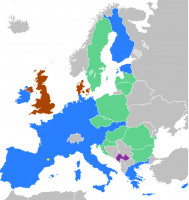 Number of SME loan rejections increases significantly since pre-crisis peaks, with those in peripheral eurozone facing steeper borrowing rates.
Number of SME loan rejections increases significantly since pre-crisis peaks, with those in peripheral eurozone facing steeper borrowing rates.
A report by the Institute of International Finance and consultancy agency Bain & Co, titled “Restoring financing and growth to Europe’s SMEs” has highlighted the issues facing Europe’s small and medium-sized businesses as the likelihood of receiving bank loans diminishes, with new bank lending to SMEs in the six countries studied – France, Spain, Italy, Portugal, Ireland and The Netherlands – declining by 47 percent since the pre-crisis peaks.
The amount of decline since pre-crisis peak levels varies from country to country, ranging from 21 percent to 45 percent for Italy, The Netherlands, France and Portugal, while Spain reached a 66 percent decline and Ireland an 82 percent decline. The report also notes that while SMEs are critical to all European economies, providing two of every three jobs and accounting for 58 percent of gross value added (GVA); in Italy, Spain and Portugal, SMEs account for 20 percent more employment than the European average, meaning that the declines could have an even more dramatic impact on these countries.
The Financial Times noted the report’s findings that SMEs in the peripheral Eurozone are facing “far steeper” borrowing rates, sometimes three times higher than SMEs in Germany, with small businesses in Italy, Spain, Portugal and Ireland offered credit rates between four and six percentage points higher than those in Germany.
The report said that barriers to better and cheaper credit provision for European SMEs can mainly be attributed to a lack of information about the creditworthiness of SMEs, either due to it being too costly or too difficult to obtain. The Spanish bank explained: “Annual accounts are difficult to access and up to 18 months out of date […] it’ s difficult to get more detailed data such as cash flows and positive credit information.”
The report therefore concluded that “progress has to be made in each country to further reduce information costs and increase transparency. Only then will the credit supply increase and barriers to entry drop for new lenders and investors”.
Other reasons for the lack of credit provision to SMEs include SMEs facing “many disincentives to achieving greater scale to be competitive and financially healthy”; banks being “able to shoulder less credit risk than before the crisis”; and “alternative funding providers fac[ing] many barriers to financing SMEs”.
The report suggests that SMEs’ access to finance can be improved “if Europe puts in place a well-coordinated EU-wide process to advance innovative actions to ease key impediments”, with banks and other lenders having the ability to extend financing “if governments and regulators act to explained access to information about SME creditworthiness and SMEs provide more of the information needed”. It added that “fiscal and regulatory disincentives to SME growth and financial health will need to be eased into” in order to “broaden the base of creditworthy borrowers”; and that “a refocus of the increased official financial support that is in prospect, especially at the EU level, can continue to catalyse lending by banks and others”.
